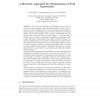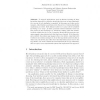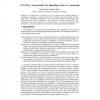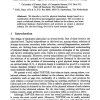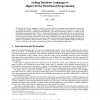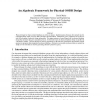DEXA
1995
Springer
14 years 3 months ago
1995
Springer
Abstract. The object-oriented database management systems store references to objects (implicit joins, precomputed joins), and use path expressions in query languages. One way of e...
DEXA
1995
Springer
14 years 3 months ago
1995
Springer
To support applications, such as efficient browsing in large knowledge bases and cooperative knowledge discovery in large databases, the concept of rule similarity is essential. In...
DEXA
1995
Springer
14 years 3 months ago
1995
Springer
- In this paper we present CICERO, a system for the assisted planning of personalized itineraries to visit the Ducal Palace in Urbino, Italy. The graphic interface gives users a st...
DEXA
1995
Springer
14 years 3 months ago
1995
Springer
We describe a tool for physical database design based on a combination of theoretical and pragmatic approaches. The tool takes as input a relational schema, the workload defined on...
DEXA
1995
Springer
14 years 3 months ago
1995
Springer
- In order to accomplish independence on the logical data organization, a relational DBMS must be capable of interpreting query language sentences which reference attributes belong...
DBVIS
1995
14 years 3 months ago
1995
More and more of our customers have to deal with very large datasets like elevation data and digital roadmaps covering Europe or even the entire world, very large images e.g. from...
DBVIS
1995
14 years 3 months ago
1995
Abstract. This paper reports on user experience with Tioga, a DBMScentric visualization tool developed at Berkeley. Based on this experience, we have designed Tioga-2 as a direct m...
DBPL
1995
Springer
14 years 3 months ago
1995
Springer
We describe the Tycoon approach to scale the successful notion of a uniform, type-safe persistent object store to communication-intensive applications and applications where lo...
DBPL
1995
Springer
14 years 3 months ago
1995
Springer
DBPL
1995
Springer
14 years 3 months ago
1995
Springer
Physical design for object-oriented databases is still in its infancy. Implementation decisions often intrude into the conceptual design (such as inverse links and object decompos...
